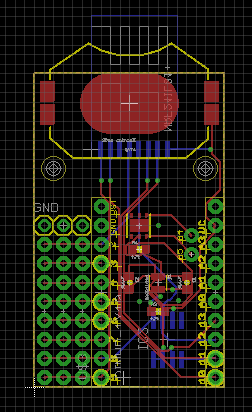Minimal design thoughts
-
@hek said:
Small production run of 200 units started this morning. :)
You would run-out of units very soon...
-
Hi, I have ordered some boards from Itead. Just some doubts: is the board a 5v or a 3.3? what's about nrf24 decoupling capacitor? May I assume the nrf24 is correctly powered at 3.3 V by the board?
Sorry but i'm on the "soft" side more than the "hard" ...:-) -
Hi, I have ordered some boards from Itead. Just some doubts: is the board a 5v or a 3.3? what's about nrf24 decoupling capacitor? May I assume the nrf24 is correctly powered at 3.3 V by the board?
Sorry but i'm on the "soft" side more than the "hard" ...:-)@Roberto-Brunialti The board is "2XAA" battery, in other words; 3V. Some components on the board won't survive 5V so it is important not to use that voltage. Decoupling for the radio is onboard.
-
The board has it's "own" thread as of now:
http://forum.mysensors.org/topic/1345/sensebender-micro -
that ìs fine for me!
-
Hi, i ordered some boards from OSHPark and at the weekend i solder this thing together. Here a pic from my work :)

Ok, it's work. You see, i have old nrf24 Modules they have not the same pinout, but i ordered some here in germany.
Some points to the design:
- this pcb has on both sides small SMD Components, that very hard to solder. I solder my one with an IR Oven and can only solder one side. It's mostly ok becouse on the second size i can solder with an iron, but never 04 components :)
- the size of smd components are too small, i understand this when you use the small Atemag328p MLF and only 04 components. Better are 0603 or 0805.
Ok, enough ... the board are great and give me a lot of ideas to my board. my are a small bigger but use the nrf24l01+ SMD version and a normal arduino pro mini. Please have a look:

-
Hi, i ordered some boards from OSHPark and at the weekend i solder this thing together. Here a pic from my work :)

Ok, it's work. You see, i have old nrf24 Modules they have not the same pinout, but i ordered some here in germany.
Some points to the design:
- this pcb has on both sides small SMD Components, that very hard to solder. I solder my one with an IR Oven and can only solder one side. It's mostly ok becouse on the second size i can solder with an iron, but never 04 components :)
- the size of smd components are too small, i understand this when you use the small Atemag328p MLF and only 04 components. Better are 0603 or 0805.
Ok, enough ... the board are great and give me a lot of ideas to my board. my are a small bigger but use the nrf24l01+ SMD version and a normal arduino pro mini. Please have a look:

looks nice. And yes, I know that 0603 is prefered for home soldering. However, as we are going to get this SMD assembled in china, there is no problem in using 0402 components.
Also, if I where to use 0603 (or 0804 for that matter), the board would be bigger.
I am working on another pcb now (a GW for mysensors), where I am going for 0603, as I don't have the same size restrictions, as I had when doing this board. This will also be double sided (so far anyways, might change it down the road)
-
And now the components arrived :d

Just miss one capacitor, which is out of stock at Mouser. Got a notice that they will get it in stok again in March 2015! So I'll have to see if I can find an alternative (It was decoupling for the radio).
Hopefully I get some time off to do the first board friday evening.
